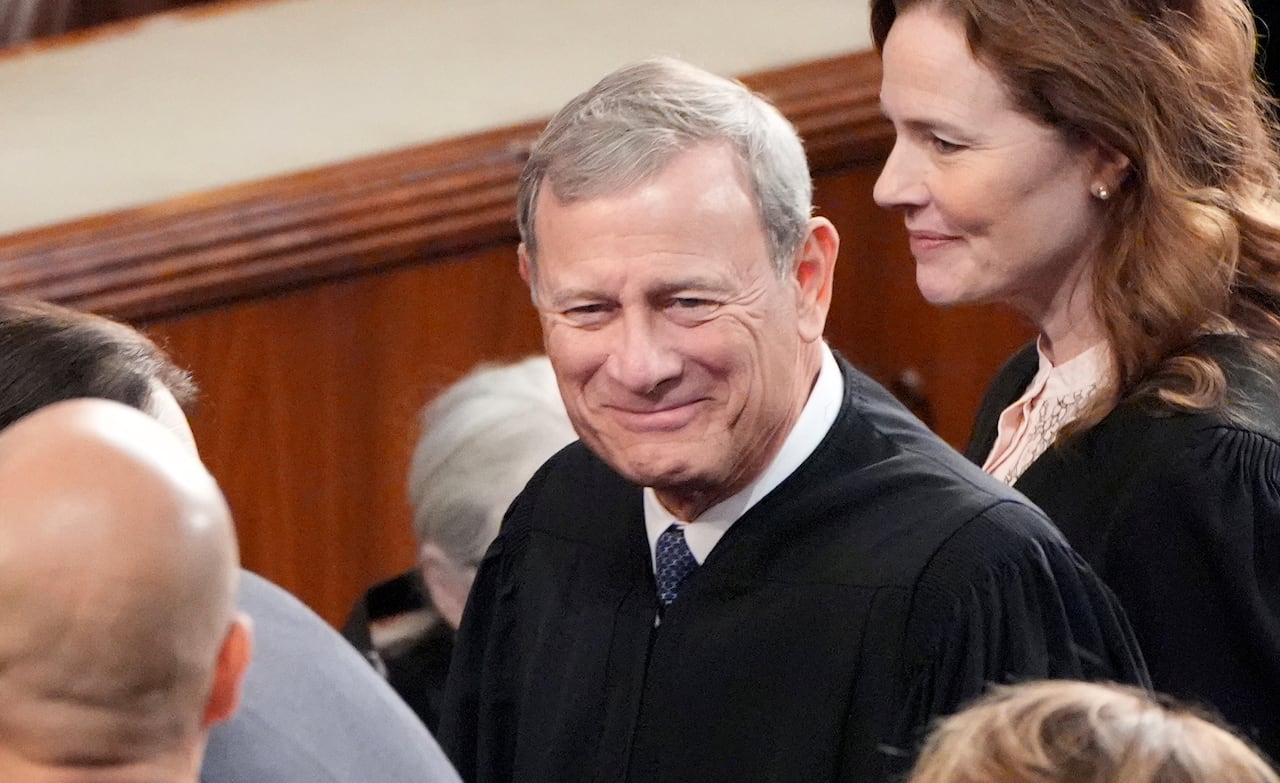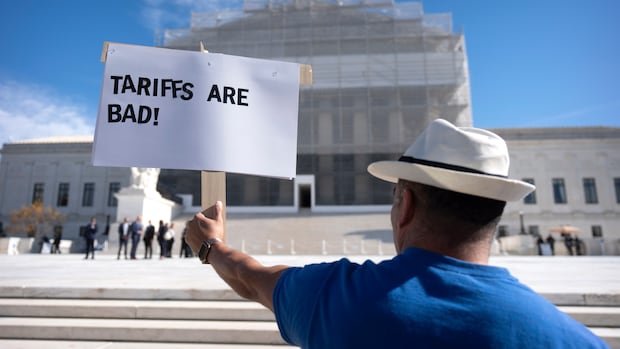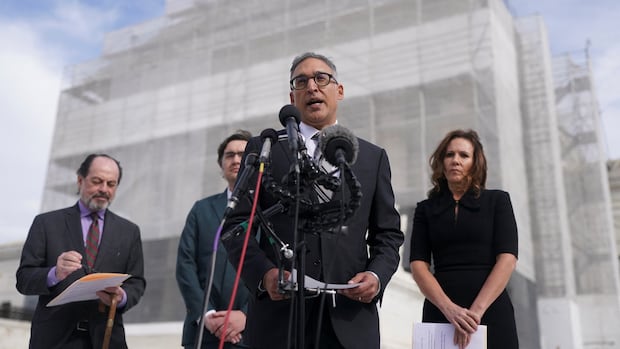With U.S. President Donald Trump choosing not to attend Wednesday’s Supreme Court oral arguments on his tariff regime — saying somewhat uncharacteristically: “It’s not about me” — it looked like the most famous person watching the proceedings would be his Treasury Secretary Scott Bessent.
But then John Mulaney showed up.
The comedian didn’t tell reporters why he was there, but he once appeared on lawyer Neal Katyal’s podcast to discuss “the parallels between Supreme Court arguments and stand-up.”
Which brings us back to the tariffs case, because Katyal presented the arguments Wednesday for the small businesses who sued the Trump administration.
“Tariffs are taxes. They take dollars from Americans’ pockets and deposit them in the U.S. Treasury,” Katyal told the court right off the top of his opening statement.
“Our founders gave that taxing power to Congress alone. Yet here the president bypassed Congress and imposed one of the largest tax increases in our lifetimes.”
WATCH | ‘Tariffs are nothing but taxes’:
Neal Katyal, a lawyer representing small businesses who oppose U.S. President Donald Trump’s use of emergency powers to impose sweeping tariffs, says the Supreme Court justices asked ‘tough’ but ‘fair’ questions about the case at a hearing on Wednesday.
The issue of whether the tariffs are a tax is central to the case because the U.S. Constitution says only Congress has the power to tax.
The lawyer presenting the administration’s case tried to persuade the justices that Trump’s across-the-board tariffs on imports from roughly 100 countries are not really a tax.
‘Who pays the tariffs?’
That argument, from Trump’s Solicitor General John Sauer, appeared not to go over so well with the court, including some of its conservative justices.
Sauer spoke dismissively of what he called “the notion that these are taxes that are all borne by Americans” and added, “There’s no basis for that in the record.”
Chief Justice John Roberts leapt on that assertion.
“Well who pays the tariffs?” asked Roberts, who was nominated to the Supreme Court in 2005 by then-president George W. Bush, a Republican.

“Sometimes the foreign producer would pay them. Sometimes the importer would bear the cost. The importer could be an American, could be a foreign company,” Sauer explained.
“It’s been suggested that the tariffs are responsible for a significant reduction in our deficit,” Roberts said. “I would say that’s raising revenue domestically.”
Justice Neil Gorsuch, another conservative, said twice during the hearing that he was “struggling” to accept Sauer’s arguments.
No president before Trump has used the 1977 International Economic Emergency Powers Act (IEEPA) to levy tariffs. The act empowers the president to “regulate” imports.
Justice Amy Coney Barrett, who was nominated to the top court by Trump in his first term, asked Sauer to point to “any other time in history” when any law that allows a president to regulate imports also gave the authority to impose tariffs. Sauer put forward a pair of examples that Barrett seemed to shoot down.
The Trump administration lost this case in all the lower courts. At the level preceding the Supreme Court, appeals court judges similarly questioned Trump’s authority to use the IEEPA to impose his tariff regime without explicit approval from Congress.

Veterans of covering the Supreme Court analyze the lines of questioning from the court’s nine justices to get a sense of where the decision could be headed. The overall theme in Wednesday’s coverage: the tone of skepticism in the pointed questions from the court’s conservative judges.
“Key Supreme Court conservatives seemed skeptical” of the Trump administration’s case, The Associated Press reported in its news item on the hearing.
Most of the justices “asked skeptical questions about President Trump’s use of emergency powers to impose tariffs on imports from nearly every U.S. trading partner,” the New York Times reported.
Trump’s global tariff regime “appeared to be on shaky ground after Supreme Court justices expressed skepticism” about his authority to impose the sweeping import taxes, said the Wall Street Journal.
Amy Howe, cofounder of the everything-Supreme-Court website SCOTUSBlog, says she believes the court will strike down the tariffs.
“Some of my colleagues in the press room were speculating that it could even be 9-0,” Howe told the U.S. public affairs network C-SPAN after the hearing. While she also predicted the ruling will go against the Trump administration, she said it’s more likely to be a 6-3 or 7-2 split.
It will take weeks or possibly months before the court renders its decision.
If the tariffs are ruled illegal, the Treasury could be forced to pay back the $90 billion (US) that has been collected so far through the tariffs Trump imposed under the IEEPA.
The ruling will not, however, do anything about the Trump tariffs that currently have the biggest impact on the Canadian economy.
Trump used long-established presidential powers to protect U.S. industries when he levied tariffs on steel, aluminum, automobiles and softwood lumber.
The Canada-specific tariffs that could be struck down are those that Trump imposed in March then boosted to 35 per cent this summer, ostensibly as a response to cross-border fentanyl trafficking.
Those tariffs hit a relatively small slice of Canadian exports: goods deemed non-compliant with the Canada-U.S.-Mexico Agreement.
How small? Official U.S. government figures show that $1.97 billion (US) has been collected this year in IEEPA tariffs on imports from Canada.







